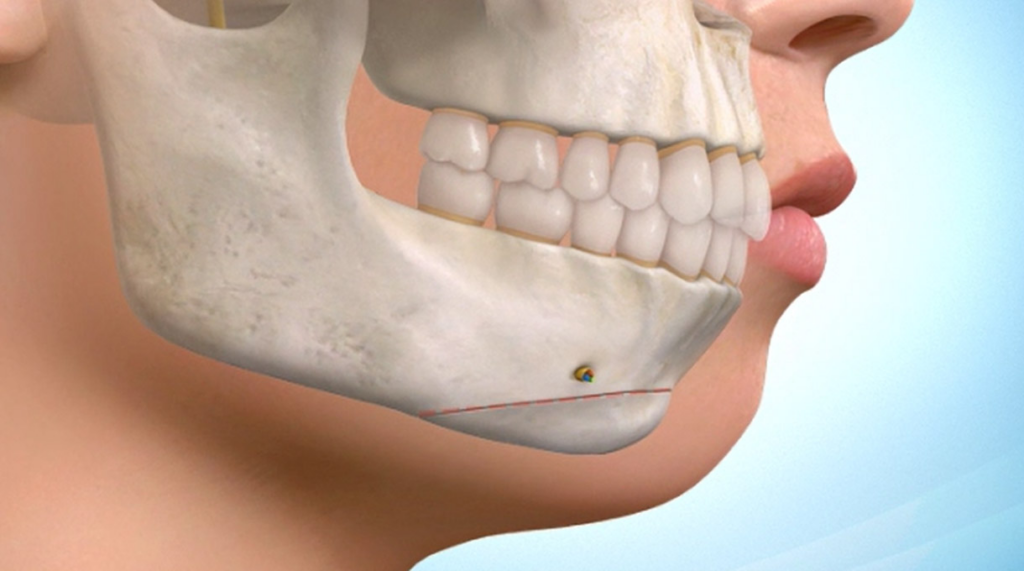Imagine a surgical procedure that not only refines your appearance but also profoundly improves your quality of life. That’s the power of maxillofacial osteotomy, a specialized surgery that reshapes the bones of the face and jaw to achieve both aesthetic and functional harmony. This comprehensive guide delves into the intricacies of facial osteotomies, exploring their transformative benefits, addressing common concerns, and outlining the journey towards a revitalized you.

Table of Contents
Understanding Facial Osteotomy: Beyond Traditional Approaches
Facial osteotomy encompasses a range of surgical procedures designed to correct irregularities in the facial bones, specifically the jaw and cheekbones. Unlike non-surgical options like fillers or Botox, which address soft tissue concerns, facial osteotomies provide permanent structural changes. These procedures address a spectrum of concerns, from misaligned jaws and bite problems to facial asymmetry and aesthetic imbalances.
Maxillofacial osteotomy, a specific type of facial osteotomy, focuses on correcting irregularities in the maxilla (upper jaw) and mandible (lower jaw). This procedure proves particularly effective in addressing dentofacial deformities, where the misalignment of jaws affects bite, speech, and overall facial harmony. Maxillofacial osteotomies utilize precise incisions within the mouth, minimizing visible scarring and allowing for targeted bone repositioning.
While traditional approaches to facial rejuvenation often focused solely on soft tissue manipulation, advancements in surgical techniques have paved the way for a more holistic approach. Maxillofacial osteotomies exemplify this shift, addressing the underlying skeletal framework to achieve comprehensive and lasting results. By directly modifying the bone structure, surgeons can create a harmonious balance between facial features, leading to improved aesthetics and enhanced functionality.
The decision to undergo facial osteotomy is a significant one, often driven by a combination of aesthetic and functional concerns. Individuals with dentofacial deformities, for example, may experience difficulty chewing, speaking, or even breathing properly. These functional impairments can significantly impact their quality of life, making maxillofacial osteotomy a life-changing procedure.
Furthermore, facial osteotomies offer solutions for individuals seeking to address aesthetic concerns that extend beyond the capabilities of non-surgical treatments. By repositioning the jawbones, surgeons can improve facial symmetry, create a more defined jawline, and correct issues like a receding chin or a protruding jaw, resulting in a more balanced and aesthetically pleasing facial profile.

Facial Osteotomy for Enhanced Aesthetics: Achieving Your Desired Look
Facial aesthetics are deeply personal, reflecting individual preferences and cultural standards. Facial osteotomies empower individuals to achieve their desired look by addressing specific aesthetic concerns and enhancing natural beauty. Whether it’s achieving a more defined jawline, improving facial symmetry, or correcting a receding chin, these procedures offer a tailored approach to facial rejuvenation.
One of the key benefits of facial osteotomy for aesthetic purposes lies in its ability to create a balanced facial profile. By repositioning the jawbones, surgeons can adjust the projection and alignment of the chin, jawline, and cheekbones, resulting in a more harmonious relationship between these features. This balanced profile contributes to a more youthful and aesthetically pleasing appearance.
Facial symmetry plays a crucial role in perceived attractiveness. Studies have shown that symmetrical faces are often rated as more attractive, signifying good health and genetic fitness. Facial osteotomies can address facial asymmetry by repositioning the bones to create a more balanced and symmetrical appearance. This correction can involve adjusting the position of the jaw, cheekbones, or a combination of both, depending on the individual’s needs.
Facial osteotomies offer a powerful solution for addressing specific facial features that individuals may find bothersome. For instance, a receding chin, often perceived as a sign of weakness or lack of confidence, can be corrected through genioplasty, a type of facial osteotomy that involves reshaping and repositioning the chin bone. Similarly, a protruding jaw, which can create a more masculine or harsh appearance, can be softened through surgical adjustments to the jawbone.
The long-lasting nature of facial osteotomies distinguishes them from temporary solutions like fillers or Botox. While these non-surgical options provide immediate results, they require ongoing maintenance treatments. In contrast, facial osteotomies offer a permanent solution, as the repositioned bones heal in their new positions, resulting in lasting aesthetic improvements.
Facial Osteotomy and Functional Harmony: More Than Just Looks
Beyond their aesthetic benefits, facial osteotomies play a vital role in addressing functional issues stemming from dentofacial deformities. These deformities, often caused by genetic factors or developmental abnormalities, can lead to a range of problems affecting the bite, speech, and overall oral health. By correcting these underlying skeletal issues, facial osteotomies not only improve appearance but also enhance functionality, leading to a significant improvement in quality of life.
Malocclusion, commonly known as a “bad bite,” arises from a misalignment between the upper and lower teeth. This misalignment can stem from various factors, including jaw size discrepancies, teeth crowding, or skeletal imbalances. Facial osteotomies address malocclusion by repositioning the jaws to create a proper bite, allowing for efficient chewing, clear speech, and optimal oral health.
Sleep apnea, a serious sleep disorder characterized by pauses in breathing during sleep, can be linked to dentofacial deformities, particularly a recessed lower jaw. When the lower jaw is positioned too far back, it can constrict the airway, leading to breathing difficulties during sleep. Maxillofacial osteotomies can help alleviate sleep apnea by repositioning the jawbones, expanding the airway, and improving airflow, leading to better sleep quality and overall health.
Difficulties with chewing and speaking can significantly impact an individual’s daily life. Dentofacial deformities can hinder proper chewing by preventing the teeth from meeting correctly, leading to digestive issues and nutritional deficiencies. Similarly, misaligned jaws can affect speech clarity, making it difficult for individuals to articulate certain sounds. Facial osteotomies address these issues by correcting the underlying jaw alignment, allowing for proper teeth occlusion and improved tongue and lip movement, leading to easier chewing, clearer speech, and enhanced overall communication.
The functional benefits of facial osteotomies extend beyond addressing specific concerns like malocclusion or sleep apnea. By improving the alignment and function of the jaws, these procedures contribute to better oral health. A properly aligned bite reduces stress on teeth, gums, and jaw joints, lowering the risk of dental problems like tooth wear, gum disease, and temporomandibular joint disorder (TMD). Moreover, improved chewing efficiency aids in digestion and nutrient absorption, contributing to overall well-being.
Recovery and Results: What to Expect After Facial Osteotomy
While facial osteotomies offer transformative results, it’s essential to approach the procedure with realistic expectations and a thorough understanding of the recovery process. Recovery varies depending on the complexity of the surgery, individual healing capabilities, and adherence to post-operative care instructions. This section outlines the typical recovery timeline, potential discomfort, and the gradual emergence of visible results following facial osteotomy.
Immediately following surgery, patients can expect some swelling, bruising, and discomfort, which is normal and gradually subsides over time. Pain medication prescribed by the surgeon helps manage discomfort effectively. Swelling usually peaks within the first 48 hours and gradually diminishes over the following weeks. Bruising may take a little longer to fade, typically resolving within two to three weeks.
During the initial recovery period, a soft food diet is recommended to minimize stress on the jaw and promote healing. Patients typically transition back to their regular diet gradually, as tolerated. Oral hygiene remains crucial throughout the recovery process. Rinsing with antiseptic mouthwash and gentle brushing as directed by the surgeon help prevent infection and promote optimal healing.
Most patients can return to work or school within one to two weeks after surgery, depending on the nature of their work and the extent of the procedure. However, strenuous activities and heavy lifting should be avoided for several weeks to allow for proper bone healing. The surgeon provides specific guidelines on activity restrictions based on individual cases.
Visible results from facial osteotomy become increasingly apparent as swelling subsides and the tissues heal. While initial changes are noticeable soon after surgery, it can take several months for the final results to fully manifest. As the swelling diminishes, the newly contoured jawline, improved facial symmetry, and other aesthetic enhancements become more prominent.
Facial osteotomies offer long-lasting, often permanent, results. Once the bones have healed in their new positions, they are unlikely to shift back. This permanence distinguishes facial osteotomies from temporary solutions like fillers, which require ongoing maintenance. However, it’s important to note that natural aging continues, and subtle changes in facial appearance may occur over time.
Conclusion
Facial osteotomies, specifically maxillofacial osteotomies, have revolutionized the approach to facial rejuvenation, addressing both aesthetic and functional concerns with lasting results. By reshaping the underlying skeletal framework, these procedures create a harmonious balance between facial features, leading to improved aesthetics, enhanced functionality, and a newfound sense of confidence.
If you’re considering facial osteotomy, consult with a qualified and experienced maxillofacial surgeon to discuss your individual needs and determine the most suitable treatment plan. Remember, facial harmony is achievable, and with the right approach, you can unlock your full potential, both inside and out.
Visit Dr.MFO Instagram profile to see real patient transformations! Get a glimpse of the incredible results achieved through facial feminization surgery and other procedures. The profile showcases before-and-after photos that highlight Dr. MFO’s expertise and artistic vision in creating natural-looking, beautiful outcomes.
Ready to take the next step in your journey? Schedule a free consultation with Dr. MFO today. During the consultation, you can discuss your goals, ask any questions you may have, and learn more about how Dr. MFO can help you achieve your desired look. Don’t hesitate to take advantage of this free opportunity to explore your options and see if Dr. MFO is the right fit for you.
FAQ
What exactly does “maxillofacial” mean?
The term “maxillofacial” combines “maxilla” and “mandible.” The maxilla refers to the upper jawbone, while the mandible is the lower jawbone. Therefore, “maxillofacial” relates to the bones, muscles, nerves, and tissues of both the upper and lower jaw and the surrounding facial structures.
How is facial osteotomy different from a facelift?
While both procedures aim to improve facial aesthetics, they address different aspects. A facelift primarily focuses on tightening loose skin and underlying tissues in the lower face and neck. In contrast, facial osteotomy involves reshaping the bones of the jaw and/or cheekbones to correct structural irregularities, resulting in a more harmonious and balanced facial appearance.
Can facial osteotomy help with my TMJ disorder?
Facial osteotomy, particularly when addressing jaw alignment issues, can significantly improve or even resolve temporomandibular joint disorder (TMJ) symptoms in some cases. By correcting jaw alignment, the procedure can alleviate stress on the jaw joints, reducing pain, clicking, and other discomforts associated with TMJ.
How long will I need to take off work after facial osteotomy?
The recovery period varies depending on the complexity of the procedure and individual healing. Most patients can return to work or school within one to two weeks. However, strenuous activities and heavy lifting should be avoided for several weeks. Your surgeon will provide specific guidelines based on your case.
Will my insurance cover facial osteotomy?
Insurance coverage for facial osteotomy depends on your specific plan and the reasons for the procedure. If the surgery is deemed medically necessary to address functional issues like malocclusion or sleep apnea, insurance is more likely to cover a portion of the costs. Coverage for purely cosmetic procedures is less common. It’s essential to consult with your insurance provider to determine your specific coverage.








